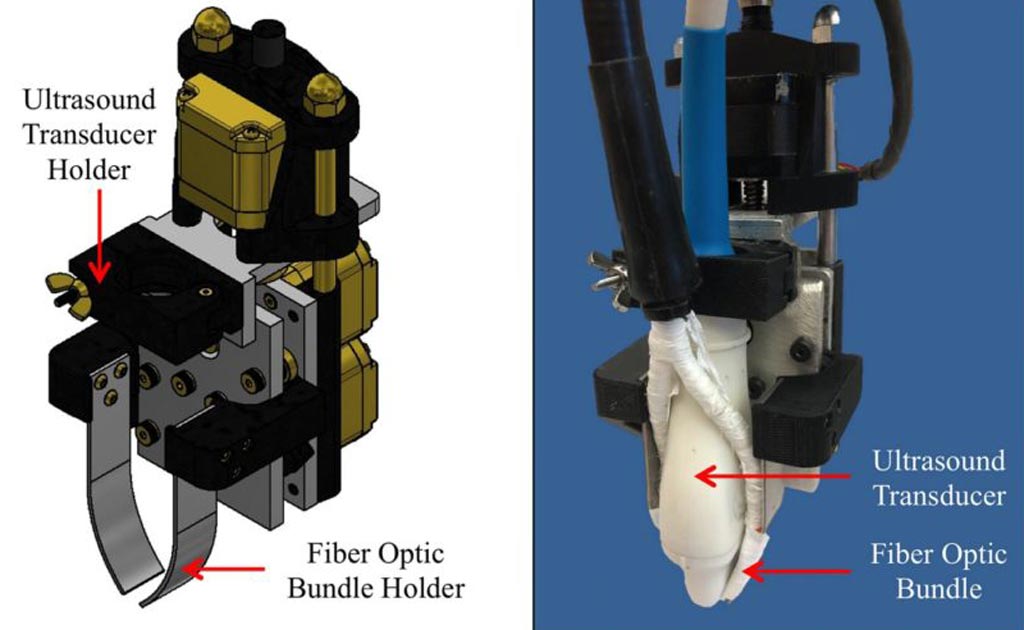Photoacoustic Probe Combines Optical and Ultrasound Technology
By MedImaging International staff writers
Posted on 13 Sep 2018
A new study describes how a novel biomedical imaging system converts absorbed optical energy into an acoustic signal that can be detected by ultrasound transducer.Posted on 13 Sep 2018
Researchers at Purdue University (Lafayette, IN, USA) have created a motorized photoacoustic tomography (PAT) holder that allows users to easily maneuver and aim the device in order to tune the depth where light is focused, improving light penetration depth and signal-to-noise ratio (SNR) by reducing probe-skin reflection artifacts and improving light distribution in the image acquisition plane. This is achieved by tuning fiber orientation, thus reducing the attenuation of incident light by soft tissues.

Image: A motorized photoacoustic probe holder helps improve light penetration depth and SNR (Photo courtesy of Purdue Research Foundation).
The researchers then validated the motorized PAT probe through ex-vivo (laboratory) Monte Carlo simulations and imaging of a tissue mimicking phantom, and in-vivo imaging of murine periaortic fat. Overall, the ex-vivo results showed a several millimeter improvement in penetration depth, with in-vivo results showing a 62% increase in lipid SNR. The PAT probe also utilized a 7-μm aluminum filter to block probe-skin reflection artifacts. The study was published on August 28, 2018, in Photoacoustics.
“The nice thing about photoacoustic tomography is the compositional information. Using photoacoustic tomography for intraoperative tumor biopsies could help surgeons make sure they remove all the cancer from a patient,” said lead author Craig Goergen, PhD, of the Weldon School of Biomedical Engineering at Purdue. “Among other potential uses for photoacoustic tomography is the mapping of lipid deposition within an arterial wall that can cause other health problems, measuring cardiac tissue damage, and tumor biopsies.”
PAT uses non-ionizing laser pulses delivered into biological tissues. Some of the delivered energy is absorbed and converted into heat, leading to transient thermoelastic expansion, and thus wideband ultrasonic emission, which can be detected by transducers and analyzed to produce images. The magnitude of the photoacoustic signal is proportional to the local energy deposition, which can be demonstrated by optical absorption contrast on the images of the targeted areas.
Related Links:
Purdue University














